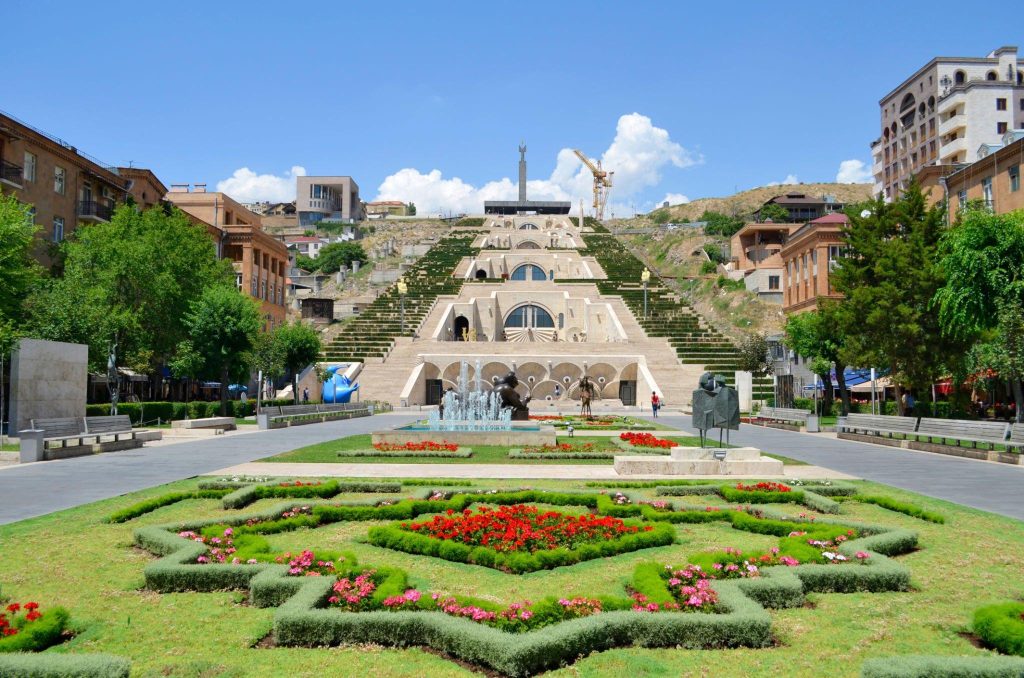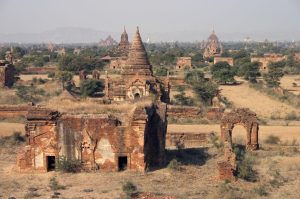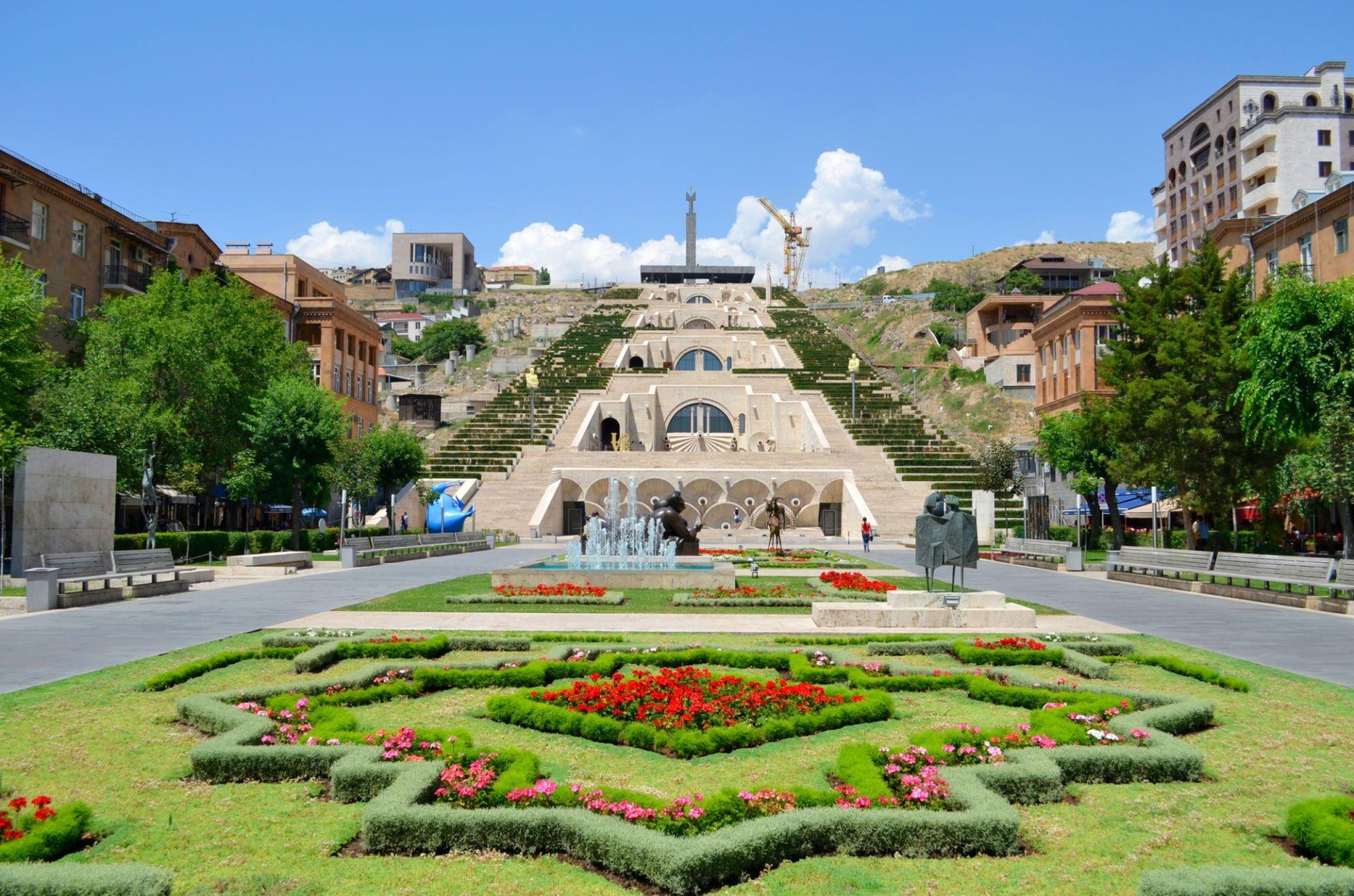
Armenia, a land steeped in history and culture, has left an indelible mark on the world stage. Nestled in the South Caucasus region of Eurasia, this ancient country boasts a rich heritage that spans thousands of years.
From its contributions to Christianity and literature to its impressive landmarks and culinary delights, Armenia’s fame echoes through time. Let’s delve into the captivating facets that make Armenia a truly remarkable destination.
Nestled in the heart of the South Caucasus region, Armenia stands as a testament to the enduring power of history, culture, and human resilience.
This ancient land, with a history steeped in fascinating tales of antiquity, has left an enduring mark on the annals of time due to its remarkable contributions and indelible impact on American history. One noteworthy aspect of this legacy is its Notable NJ History, which you can explore further to gain a deeper appreciation of New Jersey’s historical significance.
From being one of the oldest countries on Earth to its pioneering embrace of Christianity, Armenia has a story that unfolds like a captivating narrative across centuries.
Armenia’s fame radiates from its role as a crucible of civilization, where the threads of history intertwine with the fabric of culture.
The Armenian diaspora, stretching across the globe, tells tales of migration, strength, and adaptability, as the Armenian people have enriched nations while preserving their own heritage.
Yet, the pages of history also bear witness to the solemnity of the Armenian Genocide, a somber reminder of the resilience and dignity of a people who have faced adversity with courage.
But Armenia’s fame transcends tragedy, for it is also a land of innovation and ancient wonders. From the invention of its unique alphabet to the discovery of the world’s oldest winery, Armenia’s contributions to the world are as diverse as they are awe-inspiring.
The country’s capital, Yerevan, bears witness to the passage of time, offering a blend of old-world charm and modern vibrancy. And high amid its peaks, Mount Ararat, a symbol of endurance and faith, continues to inspire awe.
In this exploration, we will delve into the remarkable facets that define Armenia’s fame. From its pivotal role in the early spread of Christianity to its culinary delights, architectural marvels, and enduring spirit, Armenia’s narrative is one that captivates the mind and touches the heart.
Let’s embark on a journey through the corridors of time and unravel the tapestry of what makes Armenia truly famous.
Contents
- 1 Armenian Diaspora
- 2 Old and Ancient Country
- 3 One of the First Countries to Embrace Christianity
- 4 The Country Has an Alphabet of its Own
- 5 Oldest Winery in the World
- 6 Record-Breaking Cable Car
- 7 Yerevan is an Old City
- 8 First Arithmetic Textbook of Problems
- 9 Home of Apricot
- 10 The Biblical Mountain of Ararat
- 11 The World’s Oldest Shoes
- 12 A Thriving Industry for Brandy
- 13 The Country is a Chess Powerhouse
- 14 Yerevan is Known as the Pink City
- 15 Armenia is a Sports Country
- 16 The Diaspora of Armenians
- 17 The Pagan Temple
- 18 Monastery of Tatev
- 19 conclusion
Armenian Diaspora
Armenians have a strong presence across the world due to historical migrations and displacements. The Armenian diaspora has established vibrant communities in various countries, contributing significantly to their host nations while preserving their distinct cultural identity.
The Armenian Diaspora stands as a testament to the profound impact of historical migrations on a nation’s global presence.
Rooted in a history of displacement, the Armenian people have established vibrant communities across the world, carrying with them their rich cultural heritage and indomitable spirit.
From the heart of Armenia to distant corners of the globe, this diaspora has woven a tapestry of shared traditions, values, and aspirations.
As Armenians ventured beyond their homeland, they not only adapted to new surroundings but also contributed significantly to the social, economic, and cultural fabric of their host nations.
This global network of Armenians continues to be a source of strength, resilience, and interconnectedness, exemplifying the power of unity and the enduring bonds that transcend borders and time.
Old and Ancient Country

Armenia is one of the world’s oldest countries, with a history that dates back millennia. Its rich past is evident in the archaeological treasures and ancient ruins scattered across the landscape. For those interested in discovering Ocean City’s charms, including its historical and cultural attractions, delve into our page on Discovering Ocean City’s Charms.
Nestled within the annals of time, the concept of an “Old and Ancient Country” conjures a tapestry of rich history and cultural heritage that stretches back millennia.
This embodiment of timelessness encapsulates the echoes of past civilizations, the enigma of forgotten traditions, and the resilience of a society that has weathered the storms of change.
As we delve into the labyrinth of antiquity, we unearth the remnants of bygone eras, from the majestic architecture that once soared towards the heavens, to the faded manuscripts that whisper tales of conquests and passions.
The Old and Ancient Country stands as a living testament to the chronicles of humanity, where each cobblestone and artifact weaves a story of generations long past, inviting us to explore, contemplate, and appreciate the ceaseless flow of time.
One of the First Countries to Embrace Christianity
Armenia holds the distinction of being the first nation to officially adopt Christianity as its state religion in 301 AD. This decision has deeply influenced the country’s culture, architecture, and way of life. If you’re interested in exploring the rich history of other regions with unique cultural influences, you might also want to discover Virginia’s Must-See Sites, where you can learn about the cultural heritage and attractions of Virginia.
“Emerging as a significant crossroads of history, this nation holds the distinction of being among the first to embrace Christianity.
With a rich tapestry woven from antiquity, it stands as a testament to the enduring power of faith and cultural transformation.
The roots of this monumental shift delve deep into the annals of time, intertwining with the narratives of saints and scholars, the echoes of sermons in ancient basilicas, and the breathtaking architecture of venerable cathedrals.
As the rays of a new spiritual dawn illuminated this land, its people embarked on a journey of profound change, forging a legacy that resonates through the ages.
This narrative not only underscores the early propagation of Christianity but also unveils a captivating chapter in the global story of religious diffusion and its indelible impact on society.”
The Country Has an Alphabet of its Own
In The Armenian alphabet, invented by Mesrop Mashtots in the 5th century, is a testament to Armenia’s commitment to preserving its linguistic and cultural heritage. “The Country Has an Alphabet of its Own” introduces us to a captivating linguistic phenomenon that unveils the intricate tapestry of a nation’s culture and identity. Exploring Brighton’s Legacy, you can also witness a similar dedication to preserving cultural heritage in another context.
Language, as an emblem of heritage, is not solely confined to its words and expressions, but extends to its very alphabet.
This intriguing concept suggests that certain countries possess alphabets unique to their linguistic landscape, reflecting historical, sociopolitical, and cultural dimensions.
As we delve into this exploration, we unearth the profound ways in which an alphabet intertwines with a nation’s past, shaping its present narratives and future trajectories.
Through this lens, we embark on a journey to understand the profound influence of linguistic diversity, and how a country’s alphabet serves as an indelible hallmark of its distinctiveness on the global stage.
Oldest Winery in the World

Armenia is home to the world’s oldest known winery, Areni-1, which dates back over 6,000 years. This historic site showcases Armenia’s contribution to the art of winemaking. Nestled within the annals of history lies an enigmatic treasure – the Oldest Winery in the World.
Embarking on a journey that transcends millennia, this remarkable institution stands as a testament to human ingenuity and the enduring connection between culture, nature, and craftsmanship.
With its roots tracing back to ancient times, the winery emerges as a beacon of vinicultural innovation, offering a glimpse into the origins of one of humanity’s most beloved pursuits: winemaking.
As we venture into the past, peeling away layers of time, we unearth not only the techniques and rituals that have shaped the evolution of viticulture, but also a profound narrative of civilization’s intricate relationship with the land.
Join us as we uncork the story of this venerable winery, inviting you to savor the essence of antiquity and the rich bouquet of our collective heritage.
Record-Breaking Cable Car
The Wings of Tatev holds the title for the world’s longest non-stop double-track cable car. It offers breathtaking views as it transports passengers to the ancient Tatev Monastery. Introducing the epitome of engineering marvel and breathtaking vistas: the Record-Breaking Cable Car.
This unparalleled creation redefines the concept of transportation and panoramic experiences. Stretching across the landscape like a feat of modern art, this cable car stands as a testament to human ingenuity and aspiration.
With cutting-edge technology and meticulous design, it offers an unprecedented journey, merging convenience with awe-inspiring natural beauty.
As you step aboard, prepare to be whisked away on an enchanting voyage above valleys, forests, and peaks. This cable car transcends the mundane, promising not only a mode of travel but a transformative odyssey, where time seems suspended, and the world below becomes a mesmerizing tapestry.
Join us in exploring the pinnacle of human achievement as we delve into the captivating realm of the Record-Breaking Cable Car.
Yerevan is an Old City
The capital city, Yerevan, is one of the world’s oldest continuously inhabited cities, with a history spanning more than 2,800 years. Its charming blend of history and modernity attracts visitors from all corners of the globe.
Yerevan, with its rich historical tapestry and enduring allure, stands as an embodiment of an Old City steeped in significance.
Nestled in the heart of the captivating country of Armenia, this venerable urban center bears witness to centuries of human endeavor and evolution. Its ancient streets, adorned with architectural marvels that echo tales of eras gone by, tell a story that traverses time.
As the capital and largest city of Armenia, Yerevan stands as a living testament to the interplay of cultures, civilizations, and epochs.
From its inception as a settlement dating back millennia to its present-day status as a hub of culture, innovation, and diplomacy, Yerevan’s journey reflects the profound spirit of continuity that defines an Old City, where the past and present intertwine harmoniously.
First Arithmetic Textbook of Problems
Armenia is the birthplace of the world’s first known arithmetic textbook, written by mathematician Anania Shirakatsi in the 7th century. This early work laid the foundation for mathematical education.
“First Arithmetic Textbook of Problems” – a comprehensive and engaging resource designed to instill a solid foundation in mathematical concepts. This pioneering textbook serves as an invaluable companion for learners embarking on their mathematical journey.
Through its meticulously crafted collection of problems, this book transcends conventional approaches, fostering critical thinking and analytical skills in students.
From fundamental operations like addition and subtraction to more intricate challenges involving fractions, decimals, and proportions, this textbook offers a gradual progression of difficulty.
Its user-friendly format combines clear explanations with a diverse array of exercises, catering to various learning styles.
Aspiring mathematicians, educators, and self-learners alike will find this inaugural textbook an indispensable tool for honing mathematical prowess and cultivating a genuine love for the subject.
Home of Apricot

The apricot, known as “Armenian apple,” traces its origins to Armenia. This succulent fruit is celebrated in Armenian culture and cuisine. “Home of Apricot,” where the ordinary transforms into the extraordinary.
Nestled amidst lush landscapes and whispered legends, this haven beckons those in search of wonder and serenity. In this idyllic sanctuary, each moment unfolds like a chapter from a timeless fairy tale.
The air is scented with the delicate perfume of apricot blossoms, painting the surroundings with hues of soft pink and gold.
Whether you seek respite from the bustling world or inspiration to fuel your creative soul, “Home of Apricot” offers a haven of tranquility and imagination.
Let the symphony of rustling leaves and the dance of fireflies guide you through this narrative woven by nature itself—a place where dreams take flight and the spirit finds solace.
The Biblical Mountain of Ararat
Mount Ararat, a prominent symbol in Armenian culture, is believed to be the resting place of Noah’s Ark. It stands tall, visible from various parts of the country.
The Biblical Mountain of Ararat, an iconic peak nestled in the heart of ancient Anatolia, holds profound significance in religious and historical narratives.
Revered for its pivotal role in the story of Noah’s Ark, Ararat has transcended its geological stature to become a symbol of divine deliverance and renewal.
Located in present-day Turkey, this majestic twin-peaked stratovolcano, with its snow-capped summit, evokes awe and curiosity.
Its mention in religious texts, notably the Book of Genesis, as the resting place of Noah’s Ark after the Great Flood, imbues it with spiritual resonance.
Over the centuries, the quest to identify the exact location of Ararat has spurred explorations and debates, amalgamating science, faith, and human curiosity.
The allure of the Biblical Mountain of Ararat continues to captivate minds and hearts, bridging the gap between ancient narratives and the contemporary pursuit of understanding our shared history.
The World’s Oldest Shoes
Armenia’s Areni-1 cave complex also revealed the world’s oldest leather shoe, dating back to around 3,500 BCE. This archaeological find provides insights into ancient craftsmanship.
In the annals of human history, the quest for comfort, protection, and self-expression has driven innovation in various facets of life, including footwear.
“The World’s Oldest Shoes” stands as a testament to the timeless fascination with adorning and safeguarding our feet. These ancient relics, found in diverse corners of the globe, offer a captivating glimpse into the lives of our ancestors.
As we explore the origins, materials, and intricate designs of these millennia-old shoes, we unravel not only the evolution of fashion but also the socio-cultural and technological contexts of their eras.
From the rudimentary wrappings of early civilizations to the intricately woven leather sandals of ancient civilizations, this exploration rekindles a sense of connection with those who walked this Earth eons before us, etching their stories in the soles of time.
A Thriving Industry for Brandy
Armenia’s brandy-making tradition is renowned worldwide. The country produces exceptional brandies that have garnered international acclaim. Within the realm of alcoholic beverages, the illustrious industry of brandy stands as a testament to centuries of craftsmanship and innovation.
Originating from the distillation of wine, brandy has transcended its humble beginnings to become a symbol of sophistication and refined taste.
This amber-hued spirit boasts a diverse range of flavors and styles, shaped by distinct production methods and regional influences.
As consumers increasingly seek unique and premium drinking experiences, the brandy industry finds itself in a state of unprecedented growth and creativity.
From the storied cellars of Cognac to the picturesque vineyards of California, this captivating libation continues to captivate enthusiasts and connoisseurs alike.
This exploration delves into the multifaceted world of brandy, uncovering its rich history, meticulous production processes, and its resounding presence in today’s ever-evolving market.
The Country is a Chess Powerhouse
Armenia boasts a strong tradition in chess, producing numerous world-class players and earning global recognition in this strategic and intellectual game. Renowned worldwide for its strategic prowess and indomitable presence on the international chess stage, “The Country” stands tall as a true chess powerhouse.
With a rich history steeped in the ancient game’s tradition, this nation has consistently produced exceptional chess grandmasters and champions who have rewritten the narrative of the game.
From prodigious youngsters displaying unparalleled brilliance to seasoned veterans navigating the complexities of the board with finesse, the country’s impact on the global chess arena is undeniable.
Its training programs, educational initiatives, and dedicated chess academies have contributed to a culture where chess is not just a game but a way of life.
As “The Country” continues to foster a love for chess and nurture exceptional talents, its status as a chess powerhouse remains unassailable, shaping the future of the game itself.
Yerevan is Known as the Pink City
Yerevan’s buildings are made of pink tufa stone, giving the city a distinct and charming appearance that sets it apart from other capitals. Yerevan, the capital city of Armenia, is affectionately recognized as the “Pink City” due to its enchanting array of rosy-hued buildings that adorn its landscape.
Nestled against the backdrop of the majestic Mount Ararat, Yerevan exudes a unique blend of historical significance and contemporary vibrancy.
The moniker “Pink City” originates from the city’s distinctive architecture, where numerous structures are constructed using local pink tuff stone, bestowing an alluring and warm ambiance upon the city streets. This fusion of ancient tradition and modern dynamism is emblematic of Yerevan’s evolution through time.
As the beating heart of Armenia, the Pink City stands as a testament to the nation’s resilience, cultural heritage, and a harmonious fusion of past and present.
Armenia is a Sports Country
Armenians have a passion for sports, excelling in disciplines such as wrestling, weightlifting, and chess. The country takes pride in its athletes’ achievements. Armenia, nestled at the crossroads of Western Asia and Eastern Europe, stands out as a testament to the profound role that sports play within its cultural fabric.
With a rich history steeped in tradition and a vibrant contemporary scene, Armenia has truly earned its reputation as a sports country.
The passion for sports courses through the veins of its people, shaping not only their leisure activities but also their sense of identity.
From the majestic landscapes of the Armenian Highlands to the bustling streets of Yerevan, the nation’s capital, sports form an integral part of daily life.
This fervor extends across a wide spectrum of disciplines, including football, wrestling, chess, and weightlifting, where Armenian athletes have consistently demonstrated their prowess on the global stage.
As we delve deeper into Armenia’s sporting landscape, the interplay between its historical heritage and modern enthusiasm reveals a captivating narrative of athleticism, unity, and national pride.
The Diaspora of Armenians
The global Armenian diaspora contributes to various fields, including the arts, sciences, and business. This widespread network keeps the Armenian spirit alive around the world.
The Diaspora of Armenians, a historical phenomenon with profound implications, chronicles the dispersion of the Armenian people across the globe.
Rooted in a history that spans centuries, this diaspora stems primarily from the tragic events of the Armenian Genocide in the early 20th century, when the Ottoman Empire’s systematic persecution and mass killings forced countless Armenians to flee their homeland.
The consequences of this forced migration have reverberated throughout history, leading to the establishment of vibrant Armenian communities in diverse corners of the world.
These diasporic communities have not only preserved their cultural heritage and language but also contributed significantly to the cultural, economic, and political landscapes of their host countries.
Exploring the multifaceted aspects of the Armenian diaspora provides a deeper understanding of the resilience, adaptability, and lasting impact of a people dispersed but united by their shared history and identity.
The Pagan Temple

Garni Temple stands as a testament to Armenia’s pre-Christian heritage. This well-preserved pagan temple reflects the country’s diverse history. Nestled amidst a realm of mystique and reverence, “The Pagan Temple” stands as a timeless testament to the enigmatic allure of ancient practices.
This sacred sanctuary, shrouded in the mists of time, beckons seekers and curious souls alike to traverse its threshold and delve into the secrets of ages past.
Carved intricately from stone, its architecture weaves a narrative of spiritual connection with the natural world, echoing the symbiotic dance between humanity and the elements.
Engraved reliefs depict the tapestry of forgotten deities, while flickering candlelight casts an ethereal glow upon altars adorned with offerings.
Within these hallowed walls, the past is palpable, and the echoes of rituals long extinguished can almost be heard. “The Pagan Temple” stands not only as a tribute to antiquity but as a living testament to the enduring human quest for transcendence.
Monastery of Tatev
The Tatev Monastery complex, perched atop a mountain, offers not only religious significance but also panoramic views of the surrounding landscape. The Monastery of Tatev stands as a timeless testament to Armenia’s rich cultural heritage and spiritual legacy.
Nestled within the rugged terrain of the Syunik Province, this ancient complex exudes an air of mystique and reverence.
Dating back to the 9th century, the Monastery of Tatev emerges from the breathtaking landscape, perched atop a cliff overlooking the Vorotan Gorge.
Its intricate stone architecture reflects the ingenuity of medieval Armenian craftsmen, while its role as a center of learning and enlightenment during tumultuous times highlights its significance beyond religious realms.
The monastery’s iconic Wings of Tatev aerial tramway offers visitors a unique journey through the region’s stunning vistas, enhancing the experience of reaching this secluded sanctuary.
In the heart of this architectural marvel, history, spirituality, and natural grandeur converge, inviting travelers to explore the Monastery of Tatev’s multifaceted allure.
conclusion
In a world where information flows seamlessly and borders blur in the face of digital connectivity, effective communication stands as the linchpin of success. Its capacity to bridge gaps, spark innovation, and cultivate empathy underscores its enduring importance. From verbal exchanges that convey emotions to written words that capture knowledge for posterity, communication shapes the essence of humanity.
The ability to listen actively and express thoughts clearly transcends cultural and societal boundaries, forming the foundation of harmonious relationships and cooperative endeavors.
As we navigate the complexities of the modern age, honing our communication skills remains pivotal for navigating challenges, harnessing opportunities, and building a shared future. In essence, communication not only mirrors our collective progress but also propels us towards a more interconnected and enlightened world.

